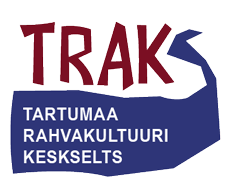La ko katson liekkuani
(Swinging Song)
Leanne Barbo and choir
In Ingrian
La ko katson liekkuani,
kiuzaelen kiekkuani:
ongo liekku vellon tehtü,
aluz ainooni panema
va on viera’an tegemä,
venäläizen vestelemä,
karjalaizen kalguttama?
Ku on omani tegemä,
paissan pannunkakkaraizen,
keidän keltaizen munaizen
tinazessa tiskizessä,
vaski-reunassa vaissa.
Ku on viera’an tegemä,
keidän kännün käärmeidä,
pion pitkiä mattoja.
In English
Let me now look at my swing,
Let me tempt my swing:
Has the swing been made by brother,
Its lower beam set by my only one,
Or has it been made by a stranger,
Raised by a Russian,
Carved by a Karelian?
If it’s made by my own (brother),
I will make a pancake,
I will boil a yellow egg
In a tin dish,
In a copper-rimmed bowl.
If it’s made by a stranger,
I will stew a snarl of snakes,
A handful of long snakes.
Maidens coming to the swing are asking whether the swing has been made by their brother or some malevolent stranger. Own people are served eggs and pancakes, but strangers are given only stewed snakes.
Ingrian swinging traditions are explained in more detail at Votian swinging songs. The melody here, recorded from Ingrians of Soikola (Soikino), is a typical swinging melody which is also used, for example, in Shrovetide songs. Unlike the Votian melodies here, this one has no parallel variant in Estonia. Nevertheless, the songs slightly resemble Estonian swinging songs in their elaborate embellishments in the melody. Based on his fieldwork observation, the Finnish linguist and folklorist Vihtori Alava has divided a song line into four equal parts and has referred to this as “swing-based measure”, which could be interpreted as follows—during the singing of one line, the swing goes back and forth twice, with each quarter of a line marking the swing’s movement in one direction or another.
T Kati, Kulla (Volmari Porkka 1881–1883, SKVR III1 1069); Venjoki (Henrik August Reinholm 1847, SKVR IV1 680).
M Vögle Timo tütar Semmo naine, 26 a, Viistina; Ustenja Miikkula tütar Porfei naine, 37 a, Mäkkülä (Armas Launis 1906, SKSÄ A 301/9b, ph 53b; A 300/48a, ph 41 a).





